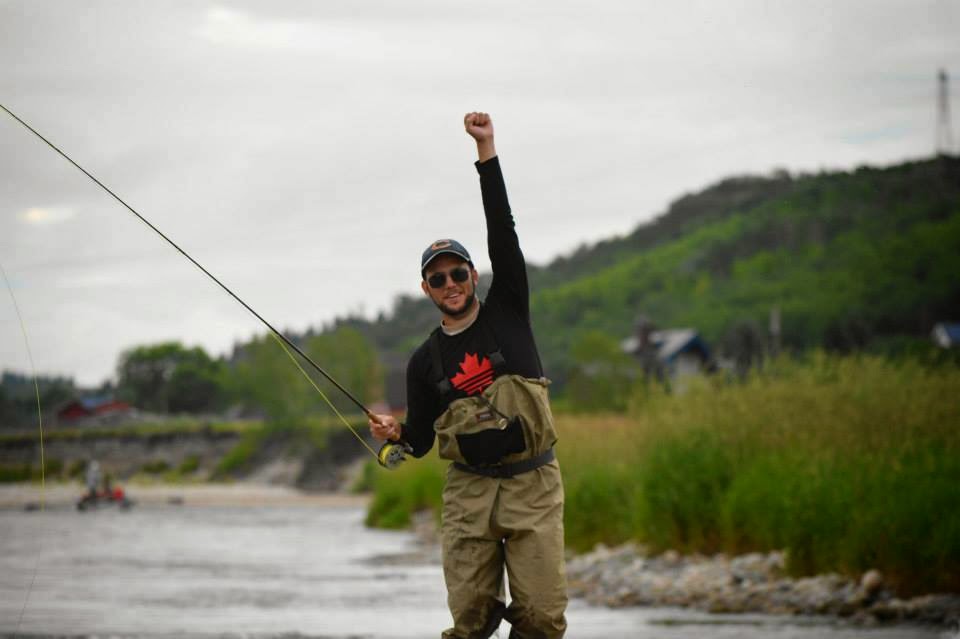Summit Lake is located just across the BC border on the Crowsnest Pass. Summit is very accessible from the highway and is manageable from shore or from a pontoon or float tube. The banks all drop off quite dramatically and the lake runs between 20-25' feet in the middle.
 |
| Summit Lake |
The most unique thing about Summit Lake is the weed growth. Fishing in the spring and fall are the most productive times of year as the lake gets pretty choked over with weed growth during the summer. The weed growth gives Summit some of the strongest food supply I have seen in any lake. Summit is full of scuds, chironomids and mayflies.
While the weed growth at Summit does wonders for the food supply, it can cause some very serious problems during the winter. Due to the lack of depth, excessive weed growth and the absence of an aerator, Summit can be prone to regular winter kills.
In May of 2014 we took our first trip up to Summit. The lake was nearly entirely wiped out that winter and we spent the entire day chasing one small school. The outcome was 8 hours of fishing without so much as a sniff. We saw countless 20"+ trout dead around the lake which was disappointing to say the very least.
 |
| Let me off at the top! |
This year we made our second trip out to Summit, after consulting the 2014 and 2015 stocking reports. We ran into around 10 fish including one gorgeous Rainbow that looked like a retired brood stock. The majority were between 15-18" and had a ton of spunk. We mostly fished close to the banks and set our indicators about a foot above the start of the weeds. We throat pumped a number of fish and found them stuffed full of chironomids. When we tried to match the hatch, the fish didn't seem interested in what we presented. The most productive patterns were leeches throughout the day. The 2015 trip was far and away more successful than the 2015 trip, and 2016 should be even better.
 |
| Mother Hen |
Summit seems poised for a comeback. With the abundance of food supply and the cooler water temperatures the fish are able to stay active and feeding for much of the open water season. The fish in Summit grow very big very fast, and some of the stocked fish from 2014 should be getting close to that 20" range in the next few seasons. It is my hope that some solutions can be considered to combat the aggressive winter kill that so often plagues this lake.
We will certainly be headed back to Summit Lake again next year, and I look forward to reporting on the continued recovery. Until next year...




